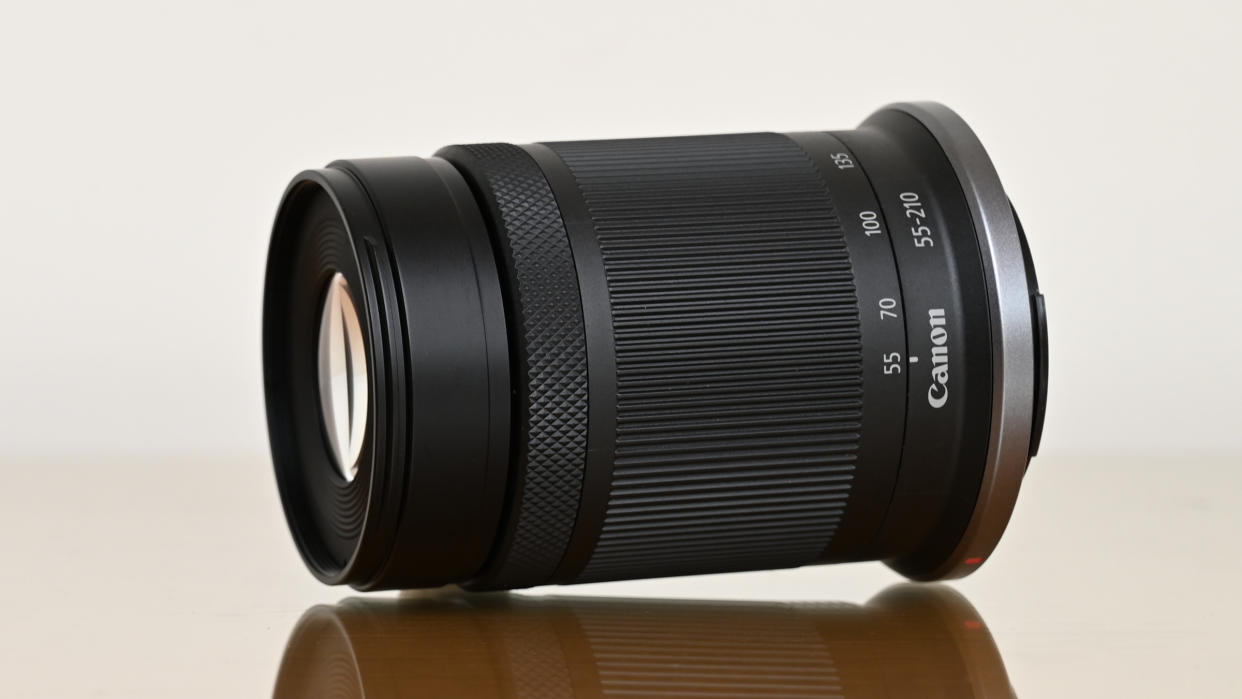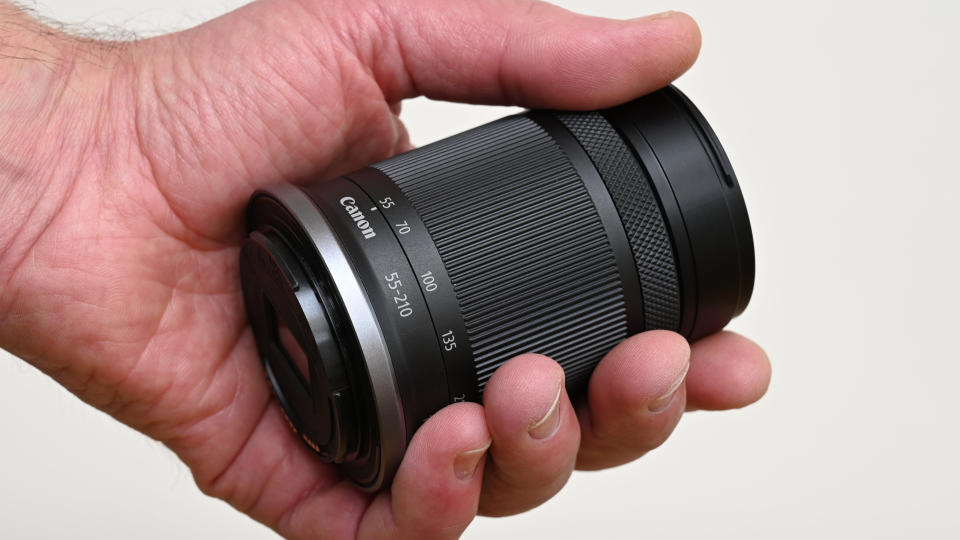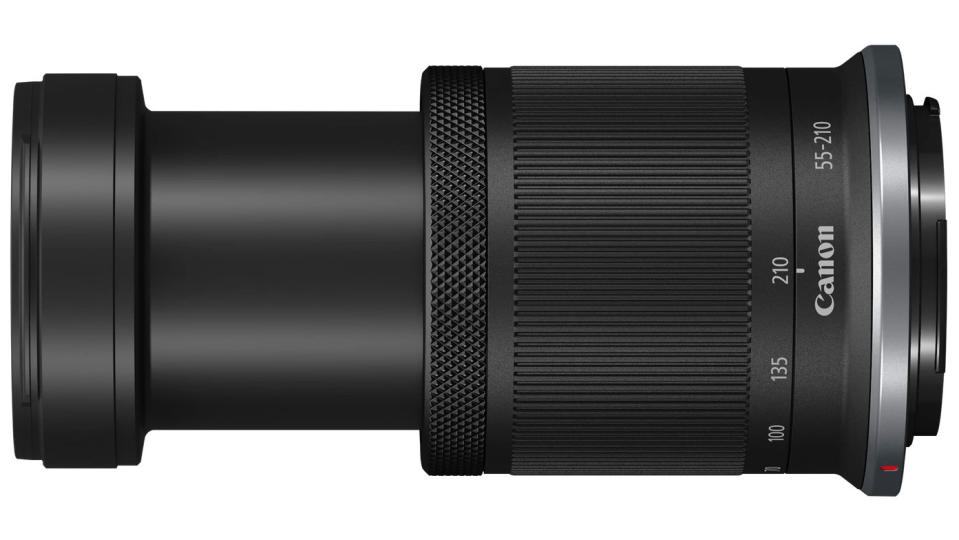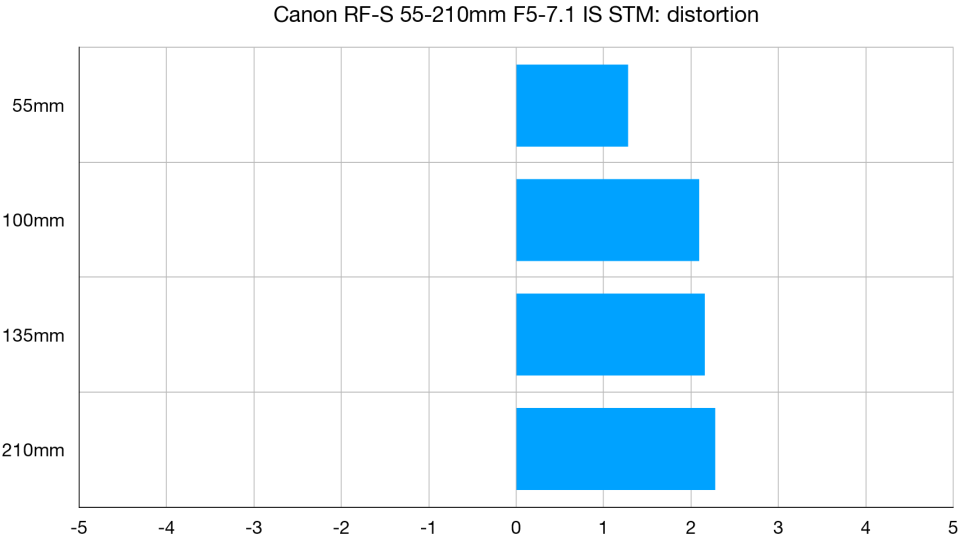Canon RF-S 55-210mm F5-7.1 IS STM review

The Canon RF-S 55-210mm F5-7.1 IS STM is only the third RF-S lens to be launched. Naturally, you can use EF and EF-S lenses on R-system cameras via an EF-EOS R mount adapter but that’s certainly not ideal. Apart from adding to the size and weight of the overall package, all-round performance tends to be rather better when using native RF and RF-S lenses.

Prior to this lens, the only two specifically APS-C format RF-S lenses for the Canon EOS R7, EOS R10 and EOS R50 were the ultra-compact, retractable RF-S 18-45mm F4.5-6.3 IS STM standard zoom and the still fairly small and lightweight RF-S 18-150mm F3.5-6.3 IS STM ‘superzoom’ lens.
Superzooms are often popular for travel photography and anytime you want to go out and about with only one lens. However, if you’ve got an ‘interchangeable lens camera’, there’s a lot to be said for using a relatively small standard zoom most of the time, and just switching to a telephoto zoom as and when you need to. That’s especially true in this case, where the telephoto option adds such little size and weight to your complete camera kit.
Specifications
Mount: Canon RF-S
Full-frame: No
Autofocus: Yes
Stabilization: Yes
Lens construction: 11 elements in 8 groups
Angle of view: 27.8 to 7.4 degrees
Diaphragm blades: 7
Minimum aperture: f/22-32
Minimum focusing distance: 1m (W) 0.73m (T)
Maximum magnification ratio: 0.05x (W) 0.28x (T)
Filter size: 55mm
Dimensions: 69x94mm (135mm at max extension)
Weight: 270g
Key features
Naturally, you can use any full-frame compatible RF lens on an APS-C format R-system body but most are a mismatch in terms of size and weight. Thanks to RF-S lenses only needing to produce a relatively small image circle, they can be significantly more compact and lightweight. This RF-S 55-210mm is physically about 10mm (or less than half an inch) longer than the RF-S 18-150mm F3.5-6.3 IS STM lens and is actually 40g lighter in weight, at 270g compared with 310g. A key feature is therefore that it’s super-lightweight and amazingly compact for a telephoto zoom.
The 3.8x zoom range is equivalent to using a 88-336mm lens on a full-frame camera, the viewing angle ranging from 27.8 to 7.4 degrees as you extend through the zoom range. Given that the EOS R10 and EOS R50 lack IBIS (In-Body Image Stabilization), optical stabilization is a key feature, and gives a 4.5-stop advantage in beating camera-shake. That rises to 7-stop effectiveness when used in conjunction with the in-body stabilization of the EOS R7. Suffice it to say you can shoot in very low lighting conditions without needing a tripod.

While stabilization is a major bonus, it naturally can’t do anything to freeze motion when shooting action, sports and wildlife, or any other moving subject. At times like these, there’s no substitute for a fast shutter speed. That can be a problem with this lens, as the widest available aperture shrinks to just f/7.1 at the long end of the zoom range. On the plus side, image quality from Canon’s EOS R-system cameras tends to remain very good at high ISO settings, so you can bump up the sensitivity to gain shutter speed.
For tracking action, a linear stepping motor aims to give fast autofocus for stills, while also enabling smooth and virtually silent autofocus transitions when shooting video.

Build and handling
The lens feels pretty robust, considering its compact and lightweight build. Like Canon’s previous RF-S lenses, however, it has a plastic rather than metal mounting plate. Even so, it should prove very durable and has the advantage of being less heavy. As with other budget-conscious Canon lenses, there are no weather-seals and the hood is sold as an optional extra. It’s the ET-60B in this case, which has a uniform rather than petal-shaped profile and retails at around £20/$30.

In a word, handling can best be described as ‘basic’. There are no switches on the lens barrel for the likes of auto/manual focus modes, or for switching the optical image stabilizer on and off. Instead, you need to resort to making these changes in the host camera body’s menu system, which is more time-consuming and brings greater risk of missing definitive moments when shooting.
On the plus side, the control ring that’s nominally for focusing can be assigned other duties when in autofocus mode. Again, these can be set up in the camera body’s menu system, so you can use the control ring for the likes of aperture, exposure compensation and ISO adjustments.
The mechanically-coupled zoom ring and electronically-coupled focus ring both work with smooth precision and, as you’d expect from a lens that weighs so little, there are no issues with zoom creep. Again, there’s no switch on the barrel to lock the zoom mechanism at its shortest setting. The physical length of the lens extends from 94mm to 135mm as you sweep through the zoom range from the shortest to the longest focal length.
Performance
Image quality is very pleasing for such a lightweight lens. Clarity, color quality and sharpness get a boost from the inclusion of two UD (Ultra-low Dispersion) elements and one precision-molded element. Canon’s trusty Super Spectra coating is also on hand to reduce ghosting and flare.
Autofocus is snappy for stills and well able to keep pace with movement, teaming up with the advanced subject-detection and tracking systems of the EOS R7 and R10.

Bokeh is always going to be a challenge for a lens with an f/5-7.1 aperture rating but, for close-ups, you can get a pretty tight depth of field, especially towards the long end of the zoom range. Unusually, the minimum focus distance is actually shorter at the long end of the zoom range, at 0.73m compared with 1m at the short end. This gives you a sizeable (though not macro) maximum magnification factor of 0.28x when shooting at a focal length of 210mm.
Chromatic aberrations are fairly minimal, even with in-camera correction switched off. Unlike with many lenses for mirrorless cameras, you can switch off in-camera correction for distortion as well but, if you do, pincushion is rather noticeable at all focal lengths and especially in the 100-210mm sector of the zoom range. All in all, performance is pretty impressive in terms of autofocus, stabilization and image quality.
Sample images











Lab results
We run a range of lab tests under controlled conditions, using the Imatest Master testing suite. Photos of test charts are taken across the range of apertures and zooms (where available), then analyzed for sharpness, distortion and chromatic aberrations.
We use Imatest SFR (spatial frequency response) charts and analysis software to plot lens resolution at the center of the image frame, corners and mid-point distances, across the range of aperture settings and, with zoom lenses, at four different focal lengths. The tests also measure distortion and color fringing (chromatic aberration).
Sharpness:


Center-sharpness is both good and very consistent throughout the entire zoom range. Sharpness out towards the edges and corners of the image frame drops off a bit at longer zoom settings. Importantly for a lens with a fairly slow aperture rating, sharpness peaks at or near the widest available apertures.
Fringing:

Color fringing is pretty negligible at the short end of the zoom range and remains of a low order at medium to long focal lengths. It’s generally difficult to spot even towards the edges and corners of the image frame, with automatic in-camera correction switched off.
Distortion:

Unlike many recent lenses designed for mirrorless cameras, this one gives the option of disabling automatic in-camera correction for distortion. WE wouldn’t advise it though, as pincushion is a bit noticeable at 55mm, more so in the 100-200mm sector of the zoom range.
Verdict
Canon’s APS-C format R-system camera bodies are literally a small wonder. This telephoto zoom is entirely in keeping with the compact, lightweight theme while adding serious reach, equivalent to 88-336mm in full-frame terms. That’s no mean feat for a lens that weighs in at just 270g (9.5oz) and fits in the palm of your hand. It has fast autofocus and highly effective optical stabilization, the only real downsides being that it has a fairly ‘slow’ aperture rating and pretty basic handling.
Read more:
• Best camera lenses to get
• Best Canon lenses
• Best Nikon lenses
• Best Sony lenses

